Introduction
In the competitive world of global commerce, the value of a brand extends far beyond revenue. It is measured by the trust it builds and the story it represents. However, counterfeit products cast a shadow over this esteemed reputation, raising doubts, compromising quality, and impacting profits. As guardians of our brand legacies, adopting a comprehensive approach to brand protection is strategically important. This approach not only safeguards our products but also fosters consumer trust in the authentic brand experience. In the realm of branding, establishing a distinct voice for survival and growth is crucial. Achieving this singularity lies in the practice of brand protection, which serves as a beacon of stability and credibility, deterring counterfeiting. This post explores the strategies that form the foundation of contemporary brand protection initiatives.
Counterfeit goods not only result in significant financial losses, estimated at over half a trillion U.S. dollars globally, but also pose serious risks to public health and safety. Brand protection plays a vital role in upholding intellectual property rights, ensuring regulatory compliance, and preserving the brand’s equity by delivering on its promised values. Effective anti-counterfeiting measures encompass a range of activities aimed at preventing fraudsters from replicating products. These measures include technological innovations, legal actions, and other deterrents to dismantle counterfeit operations.
This blog will meticulously examine the best practices for brand protection, covering various aspects such as authentication technologies, supply chain transparency, and legal strategies for brand defence. By exploring these protection practices, we aim to provide a comprehensive understanding of the full arsenal of brand security.
Understanding the Threats
Counterfeiting has become a widespread global problem, affecting all corners of the world. The statistics surrounding counterfeit goods are significant, accounting for approximately 3.3% of world trade. This includes a wide range of products, from luxury items to everyday consumer goods. Counterfeiting is particularly concerning because it can exploit new markets and adapt to evolving methods. Criminal networks engaged in counterfeiting continuously innovate to bypass existing anti-counterfeiting measures, creating a significant challenge for brands and authorities.
While the immediate impact of counterfeiting is often measured in terms of lost sales revenue, its consequences extend far beyond financial losses. Counterfeit goods pose a significant threat to brand integrity and reputation. The proliferation of fake products bearing a brand’s logo or trademark dilutes the brand’s identity and undermines its perceived value among consumers. Moreover, counterfeit products are often of inferior quality, leading to negative consumer experiences. This erosion of trust can have long-lasting effects, impacting brand loyalty and deterring potential customers.
Counterfeiting poses risks to brands across various dimensions of intellectual property rights and business operations. Trademark infringement is a prominent risk, as counterfeit products often bear unauthorised reproductions of registered trademarks, deceiving consumers into believing they are purchasing genuine goods. Additionally, counterfeiting can lead to patent dilution, where unauthorised replicas of patented products flood the market, undercutting legitimate manufacturers’ sales and undermining their investments in research and development. Beyond intellectual property concerns, counterfeiting also jeopardises public health and safety, as counterfeit goods may fail to meet regulatory standards or contain harmful ingredients. Furthermore, the profits generated from counterfeiting activities often fund organised crime and illicit activities, posing broader societal risks beyond brand protection.
Comprehensive Authentication Solutions: Beyond the Basics
Authentication solutions have evolved significantly, incorporating advanced technologies and intricate features to ensure impenetrable protection against counterfeiters. Let’s delve deeper into these sophisticated measures:
The Visual Identity: Security Labels and Holograms
Visual authenticity cues, such as holograms and unique security labels, have long been the frontline defence against counterfeiters. These features are meticulously designed with intricate patterns, specialised printing techniques, and optically variable elements, making them nearly impossible to replicate accurately. Holograms, in particular, utilise three-dimensional imagery and optical effects to provide a visually striking and easily recognizable authentication mark.
The Silent Sentinel: Secured RFID Tags
Radio-frequency identification (RFID) tags, bolstered by secure protocols and encryption techniques, serve as the silent sentinels of product tracking and authentication. RFID technology enables seamless integration into supply chain management systems, allowing for real-time monitoring and traceability of products from manufacturing facilities to end consumers. By embedding RFID tags discreetly within product packaging or labels, brands can ensure comprehensive visibility and authentication throughout the product life cycle.
The Undeniable Fence: Tamper-Evident Features
Tamper-evident packaging plays a crucial role in safeguarding both product integrity and brand reputation. These features are designed to provide visible evidence of tampering or unauthorised access, serving as a deterrent to counterfeiters and unauthorised resellers. Tamper-evident seals, labels, or closures employ innovative technologies such as fracturing substrates, hidden patterns, or irreversible changes in appearance to indicate tampering. By incorporating tamper-evident features into packaging designs, brands can reassure consumers of product authenticity while deterring counterfeiters from tampering with or replicating their products.
Innovations in Technology: The Vanguard of Protection
As technology continues to advance, the arsenal against counterfeiters grows more formidable, leveraging scientific ingenuity and computational prowess to outwit counterfeiters:
Blockchain
Blockchain technology, with its decentralised and unchangeable ledger, has emerged as a powerful tool in the fight against counterfeiting. By recording transactions and product movements on a distributed network of nodes, blockchain provides an indisputable record of product origin, ownership, and authenticity. This transparent and tamper-resistant system allows brands to verify the authenticity of products and track their journey throughout the supply chain, from production to consumption.
Nanotechnology
Nanotechnology introduces hidden security features that are invisible to the naked eye but highly effective in authenticating products. Nano-scale features, such as microscopic text, nano-ink, or nano-sized particles embedded within packaging materials, provide unique identifiers that are nearly impossible to accurately replicate. These minuscule security features add an extra layer of protection, allowing brands to distinguish genuine products from counterfeit replicas with accuracy and confidence.
Materials Science
Materials science plays a crucial role in developing secure and distinctive packaging solutions. Advanced materials, such as colour-shifting inks, optically variable films, and temperature-sensitive substrates, are engineered to include visible and hidden authentication features. These specialised materials not only enhance the visual appeal of packaging but also serve as visible indicators of product authenticity. By leveraging materials science innovations, brands can create packaging designs that are not only visually appealing but also inherently secure, deterring counterfeiters and assuring consumers of product integrity.
Supply Chain Visibility: The Golden Thread of Authenticity
Product authenticity is intricately linked to the traceable journey it takes from inception to the end consumer. Let’s explore the fundamental aspects of enhancing supply chain visibility:
Real-time Tracking and Traceability
In today’s technology-driven market, real-time tracking and traceability are pivotal in ensuring authenticity and combating counterfeiting. Leveraging technologies like GPS-enabled devices, RFID tags, and cloud-based platforms empowers brands to monitor product movement across the supply chain with precision and accuracy. By implementing real-time tracking solutions, brands can promptly detect and mitigate counterfeit infiltration, reducing the risk of fake products reaching consumers.
A Tapestry of Transparency
Supply chain visibility not only safeguards brand reputation but also fosters corporate accountability and transparency. By providing stakeholders with comprehensive supply chain data, brands can showcase their commitment to ethical sourcing, sustainability, and product authenticity. Initiatives such as blockchain-enabled traceability platforms or supplier transparency portals enable consumers to make informed purchasing decisions and trust the authenticity of brands.
The Watchful Eye: Supplier Vetting and Audits
The integrity of supply chain partners plays a pivotal role in the fight against counterfeiting. Robust vetting processes, periodic audits, and supplier certification programs are essential to ensure the authenticity and integrity of products throughout the supply chain. By establishing stringent criteria for supplier selection and performance evaluation, brands can create an ecosystem where authenticity is not merely a standard but a shared commitment among all stakeholders.
Future Trends in Brand Protection
The future holds a treasure trove of potential weapons against counterfeiting, from the predictive capabilities of artificial intelligence to the anti-counterfeiting applications of 3D printing. Here are some emerging technologies that can bolster brand protection:
- Artificial Intelligence (AI) and Machine Learning: AI and machine learning empower brands to analyse vast amounts of data from diverse sources, such as online platforms, social media, customer reviews, and market research. This enables them to identify trends, gain insights, and seize opportunities. Additionally, AI and machine learning aid in detecting and responding to anomalies like sudden spikes in online traffic, suspicious transactions, or negative sentiment, all of which may pose a threat to a brand. By recognizing and classifying patterns like logos, trademarks, or packaging, AI and machine learning can help distinguish genuine products from counterfeits. Furthermore, they assist brands in forecasting and anticipating future scenarios such as demand, supply, or risk, thereby optimising strategies and resources.
- Blockchain Technology: Serving as the underlying infrastructure of cryptocurrencies, blockchain has the potential to revolutionise supply chain transparency and traceability. By creating a decentralised and immutable ledger of transactions, blockchain allows brands to track and verify the origin, authenticity, and quality of their products throughout the distribution network. This capability acts as a deterrent to counterfeiters who exploit the opacity and complexity of global supply chains. Moreover, blockchain facilitates the use of smart contracts, which are self-executing agreements that can trigger actions or alerts based on predefined conditions. For instance, a smart contract can automatically release payment to a supplier once a product has been verified as genuine, or notify a brand of any potential tampering or deviation from the expected route.
- 3D Printing: Also known as additive manufacturing, 3D printing involves creating physical objects by depositing layers of material on top of each other. It offers several advantages for brand protection, including customization, personalization, and serialisation. Brands can leverage 3D printing to incorporate unique and intricate features like holograms, microstructures, or QR codes that are challenging or impossible to replicate using conventional methods. These features can serve as anti-counterfeiting labels that consumers can verify by scanning or interacting with the product. Additionally, 3D printing enables brands to produce items on demand, reducing the need for excessive inventory and storage, thereby minimising the risk of theft or diversion.
Conclusion
In the ever-expanding world of global commerce, the significance of brand protection cannot be overstated. Navigating the intricate modern supply chains requires finesse and technological prowess, as highlighted by the discussed strategies and innovations. For brands, the journey extends beyond merely deterring counterfeiting to actively fostering a culture of integrity, marking an evolution in their operational ethos. This evolution necessitates continuous education, public-private partnerships, and consumer advocacy.
Education empowers businesses and consumers with knowledge of their rights and the means to enforce them. Partnerships bring together the insights and capabilities of diverse stakeholders to form a more resilient defence. Consumer advocacy transforms each customer into a guardian of authenticity, invested in the integrity of their purchases. Ultimately, the health of a brand is intertwined with the trust it builds among its customers.
In an era defined by the free flow of information, proactive brand protection goes beyond safeguarding assets; it entails forging and nurturing enduring relationships with consumers. Brands that invest in robust protection strategies today will thrive tomorrow, becoming paragons of reliability in an ever-changing marketplace.
To remain stagnant is to invite obsolescence; thus, the quest for innovative brand protection strategies is an ongoing imperative. As counterfeiters evolve, so must the systems designed to thwart them. By staying on the cutting edge of technology and advocating for comprehensive and enforceable legal frameworks, brands can safeguard their legacy and, more importantly, the safety and peace of mind of their customers.
FAQs
Which technologies are the most effective in combating product counterfeiting?
Artificial Intelligence, blockchain, and 3D printing stand out as highly promising technological advancements in the ongoing fight against counterfeiting. AI possesses the capability to analyse vast amounts of data, revealing intricate patterns of counterfeiting. Blockchain technology, on the other hand, provides a secure and transparent ledger for supply chains. Lastly, 3D printing emerges as a game-changer, facilitating the creation of distinctive and intricate physical security features that are exceedingly challenging to replicate.
How can consumers ensure they are purchasing authentic products?
To safeguard against purchasing counterfeit goods, consumers should opt to buy from authorised retailers and take steps to verify product authenticity. This can be achieved through secure labels or QR codes while staying informed about the latest anti-counterfeiting technologies employed by brands. By doing so, consumers can ensure they are making informed and genuine purchases.
Can blockchain technology truly secure the supply chain against counterfeiters?
Undoubtedly, blockchain technology holds immense potential to revolutionise transparency and traceability in supply chains. By meticulously recording each step of a product’s journey on an immutable ledger, both brands and consumers can effortlessly authenticate the origin and genuineness of products. This transformative technology empowers us to forge a path towards a more accountable and trustworthy marketplace.
What is the role of consumer advocacy in brand protection?
Consumer advocacy plays a crucial role in promoting awareness and ensuring the legitimacy of purchases. By reporting suspected counterfeit products and endorsing brands that prioritise anti-counterfeiting measures, individuals empower themselves to influence market trends. Consumers have the power to demand greater transparency and integrity from brands, fostering a culture of authenticity and trust.











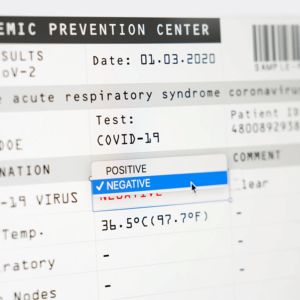

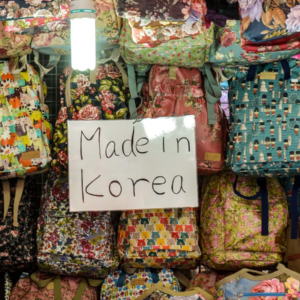



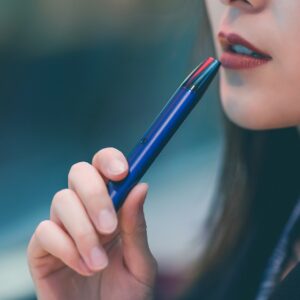
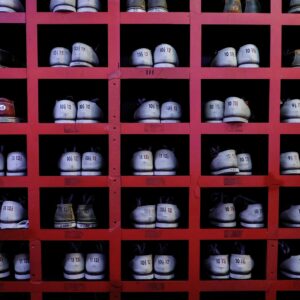

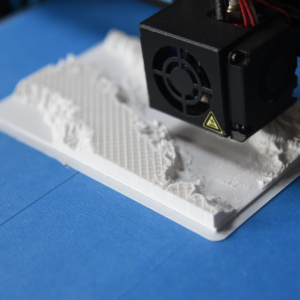
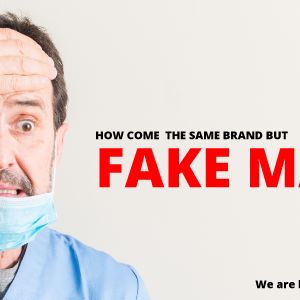



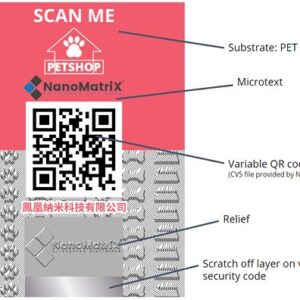


Recent Comments